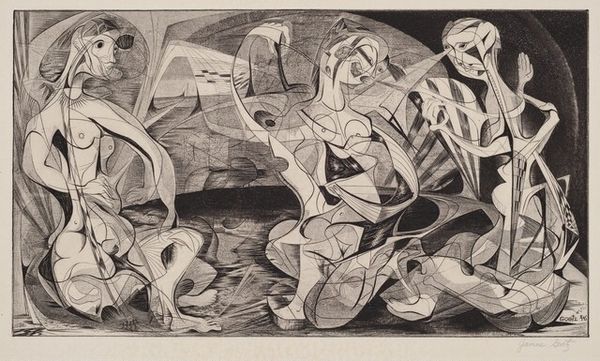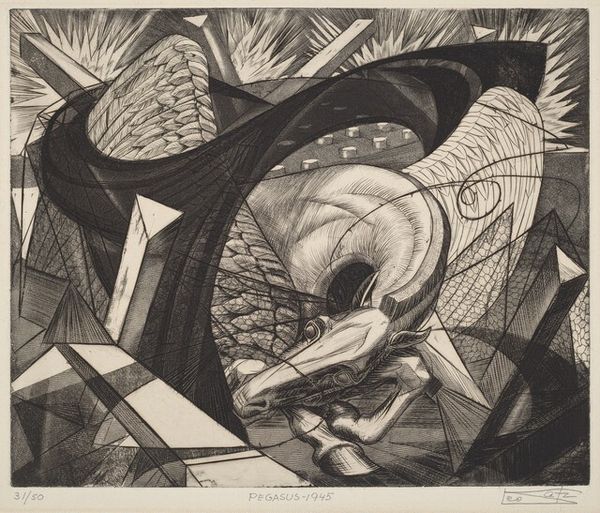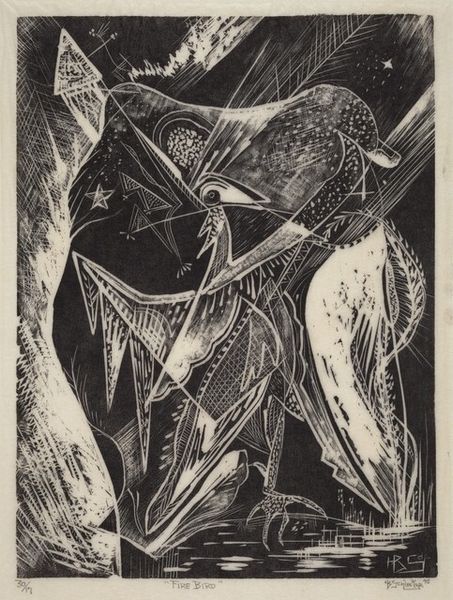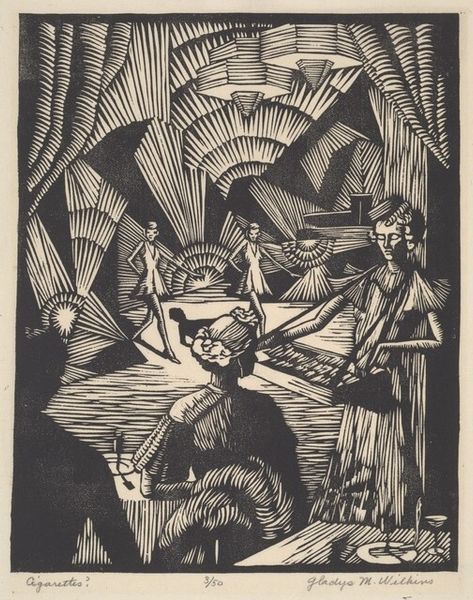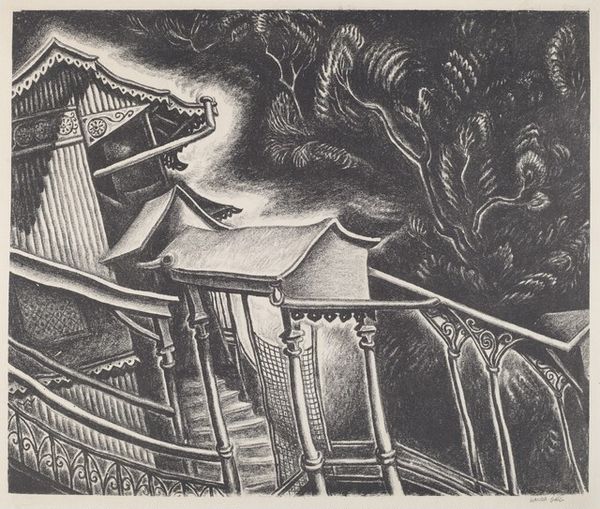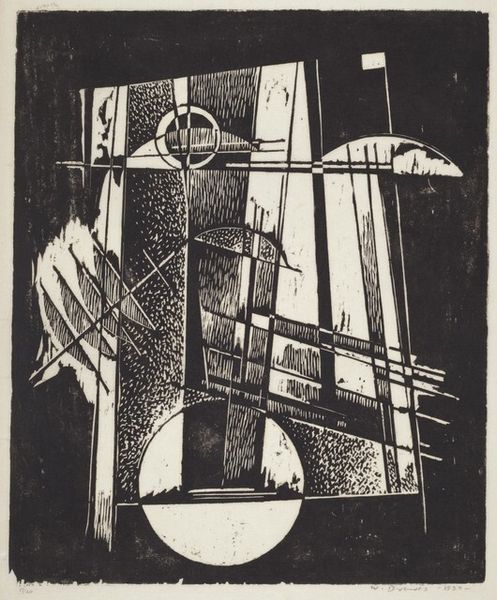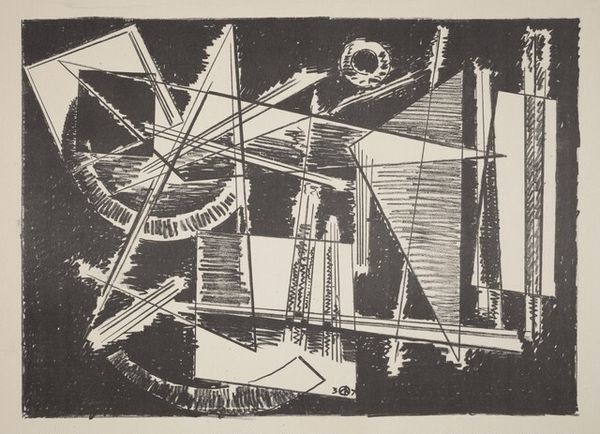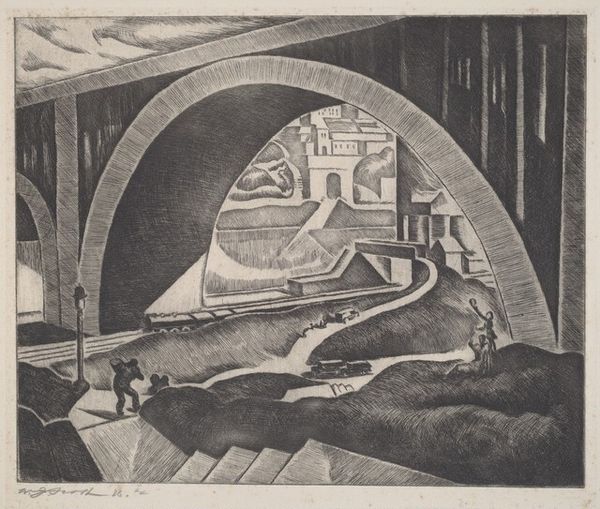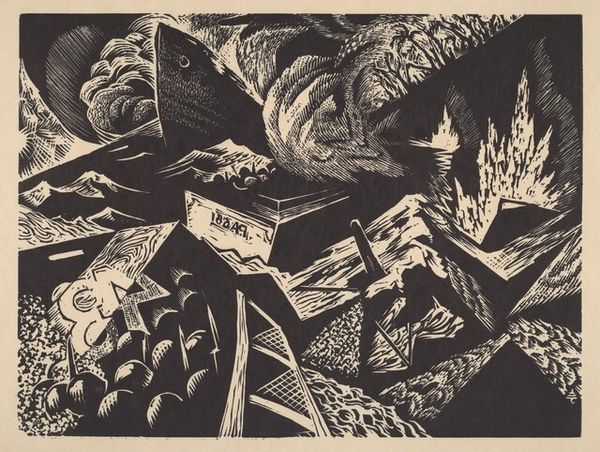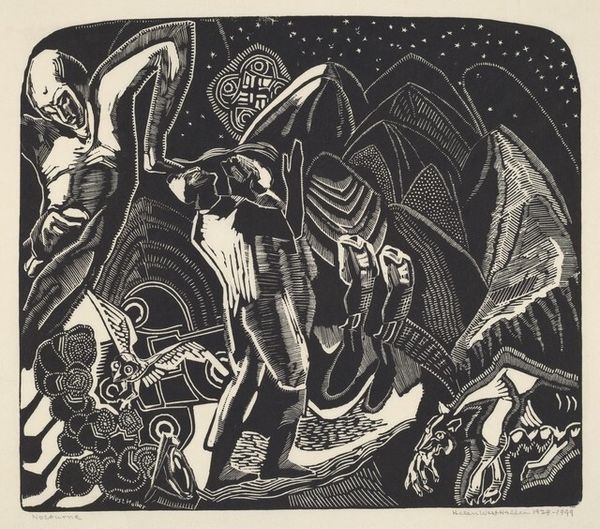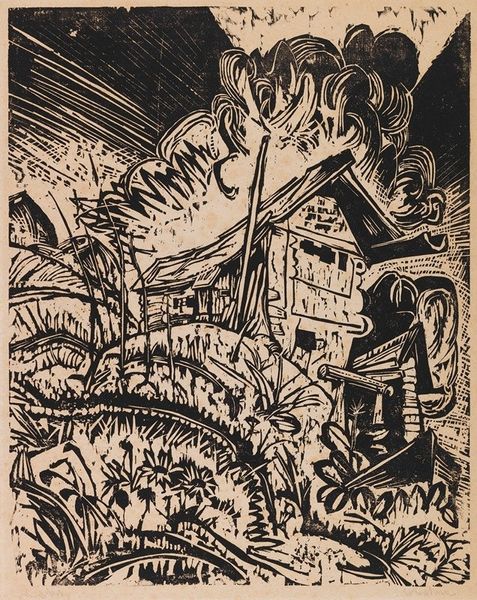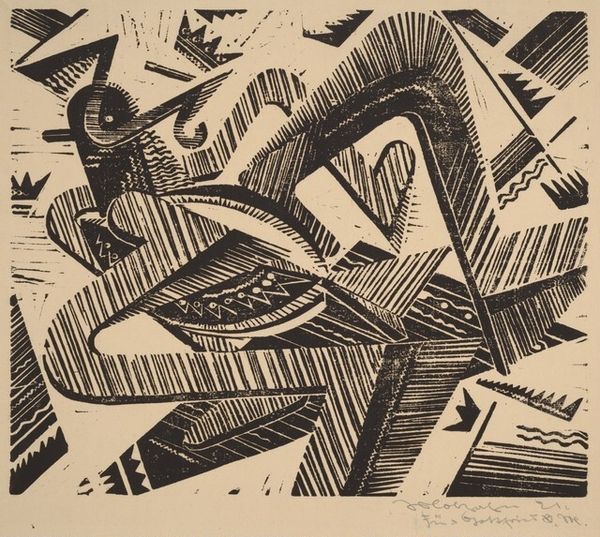
drawing, print, etching
#
abstract-expressionism
#
drawing
# print
#
etching
#
form
#
geometric
#
line
Dimensions: Image: 278 x 345 mm Sheet: 495 x 648 mm
Copyright: National Gallery of Art: CC0 1.0
Curator: Shirley Witebsky’s etching, “Night Rider,” created between 1952 and 1964, is a compelling study in form and texture. What's your initial reaction to this print? Editor: It strikes me as chaotic, yet meticulously crafted. The density of line work suggests a certain anxiety, a frenetic energy almost bursting from the confines of the paper. Curator: Yes, that intensity comes from Witebsky's layering of etched lines. Notice how the geometric shapes intersect and overlap. Semiotically, the abstraction serves to amplify the expressive quality, transforming the supposed "riders" into apparitions of motion. Editor: It makes me wonder about the socio-political context of its creation. The post-war period was a time of great societal upheaval, and art often reflected that anxiety. Was this a commentary on societal change or the perceived instability of the world order? Curator: It could certainly be read through that lens. However, if we look closely at the formal elements, the composition leads the eye on a turbulent journey. The linear perspective isn't fixed. It oscillates, almost replicating the act of losing control or being swept up in something larger. The stark black and white contrast reinforces the theme of stark change, or a disruption of the status quo, visually embodying this notion of radical alteration. Editor: Interesting! So, by focusing on the formal elements of line, tone, and form, we gain insights that maybe mirror a wider post-war psychological climate? Given that Witebsky was a woman working in a male-dominated field, did gender shape the critical reception or how these works were understood in galleries at that time? Curator: Indeed, reception is key. Perhaps it also echoes the constraints women may have felt at this time. In that sense, yes, socio-historical forces played a strong part in how Witebsky may have produced, and perhaps concealed, certain sentiments. Editor: Thanks, it’s fascinating to think about "Night Rider" not just as a collection of geometric forms but as a reflection of larger cultural anxieties and potentially personal narratives, too. Curator: I concur; examining its intricate lines through various interpretive frameworks makes it evermore rich, a piece whose forms, or visual vocabulary, create their own discourse.
Comments
No comments
Be the first to comment and join the conversation on the ultimate creative platform.
